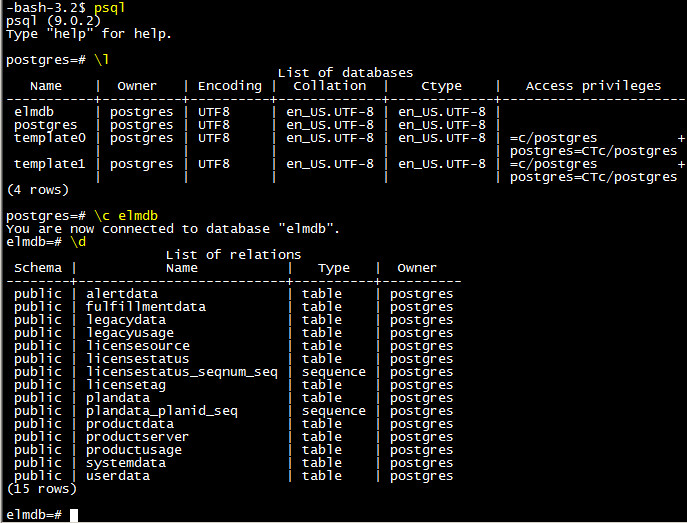

- #Psequel change databases how to
- #Psequel change databases update
- #Psequel change databases password
WARNING: collation "xx-x-icu" has version mismatchĭETAIL: The collation in the database was created using version 1.2.3.4, but the operating system provides version 2.3.4.5. When the collation is used, the current version is checked against the recorded version, and a warning is issued when there is a mismatch, for example: This value will always be pantheon and cannot be altered.When a collation object is created, the provider-specific version of the collation is recorded in the system catalog.
#Psequel change databases password

Use the following variables in your application to access the database: You can connect to the application with Pantheon's internal network. Props to Aaron Bauman for writing this script! Accessing the Database via Your Application with PHP
#Psequel change databases update
Terminus auth:login -email # see the following file: TEMPLATE = 'spf-template.spf' # may need to change this: TMP_SPF = '/tmp/tmp.spf' # Update aliasesĮcho "fetching connection string" CONNECTION_STRING = `$DRUSH $1 sql-connect ` echo $CONNECTION_STRING DATABASE = ` echo $CONNECTION_STRING | sed -e 's/.*-database=\(*\).*/\1/g' ` HOST = ` echo $CONNECTION_STRING | sed -e 's/.*-host=\(*\).*/\1/g' ` PORT = ` echo $CONNECTION_STRING | sed -e 's/.*-port=\(*\).*/\1/g' ` PASSWORD = ` echo $CONNECTION_STRING | sed -e 's/.*-password=\(*\).*/\1/g' ` USER = ` echo $CONNECTION_STRING | sed -e 's/.*-user=\(*\).*/\1/g' ` # This is for Sequel Ace: eval "echo \" $( $TMP_SPF # Swap this out to fit your system: open $TMP_SPF #!/bin/bash # exit on any errors: set -e if then echo "Usage: $0 exit 1 fi # Path to drush goes here: DRUSH = '/usr/local/bin/drush' # Authenticate with Terminus Open Sequel Ace Database Connectionĭrupal users can create spf-template.spf and use the following script to establish a database connection in Sequel Ace via Terminus and Drush:
#Psequel change databases how to
Refer to the documentation or issue queue of your software to learn more about how to configure a connection. There's a wide array of MySQL clients that you can use, including:

However, if you've saved the credentials in a local client and a month later you can't connect, check your Dashboard for the current credentials. Normally, this is transparent to a site, as the credentials are automatically included by the server. This value will always be pantheon and cannot be altered.Įach database server is in the cloud, which allows credentials to occasionally be updated, without any notice.


 0 kommentar(er)
0 kommentar(er)
